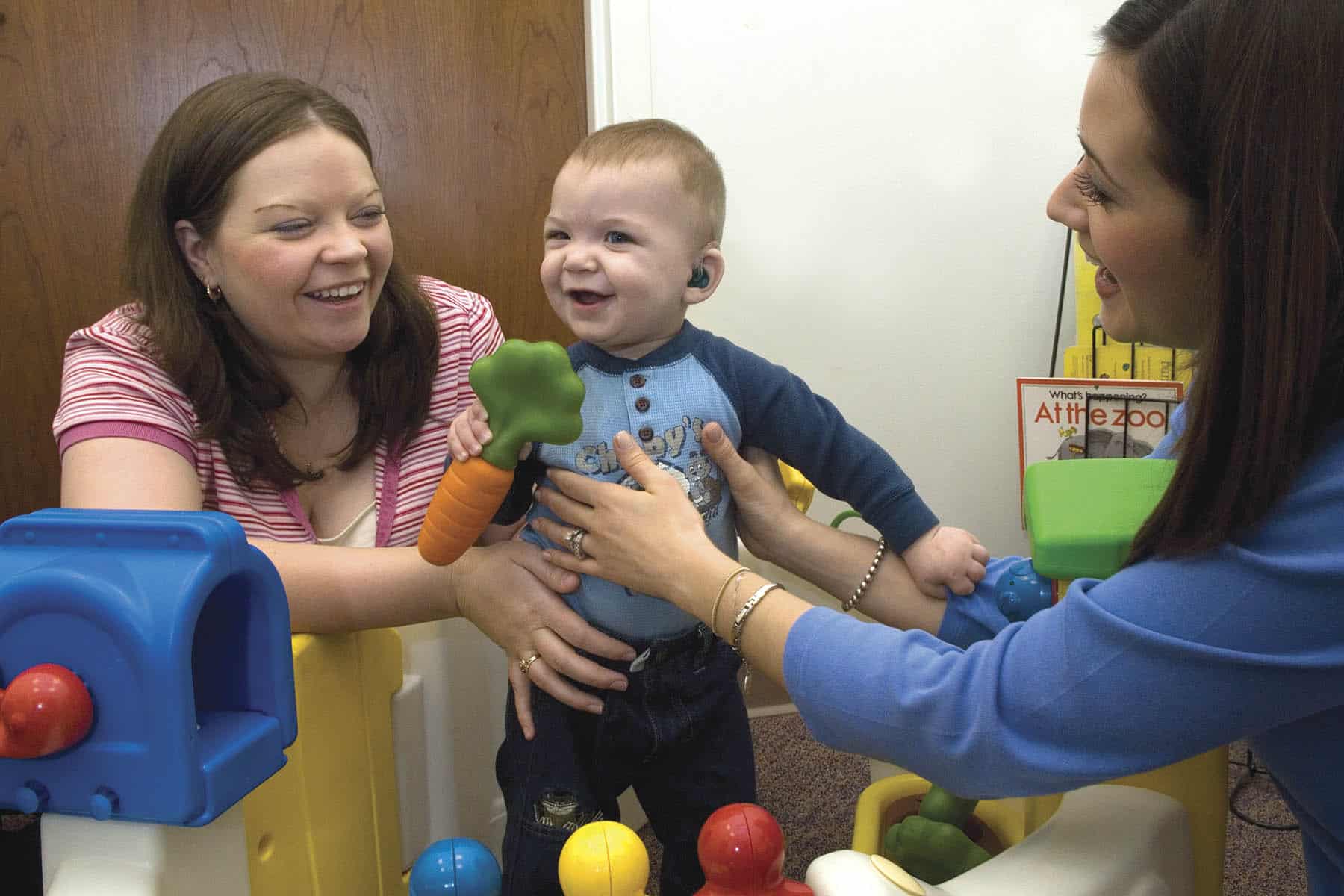Listening skills are the foundation for developing spoken language; we learn to talk based on what we hear. Auditory skills of children who are deaf and hard of hearing should be worked on as soon as the hearing loss is detected. This often begins by coaching the child’s caregiver(s) on strategies to foster auditory development. We asked the parent educators in our Joanne Parrish Knight Family Center this question:
What are your favorite activities to use with families to promote auditory development?
Here are the activities they shared:
- Play with rattles and other noisy toys. With the child’s caregiver, gather toys around the home that make noise (ex: rattles, toy drums, electronic toys). While the child is engaged in play, present one of the noises and ask the caregiver to notice if the child responded. If the child responds, show the child the source of noise and label the sound (ex: “boom boom boom”). If the child doesn’t respond, move closer and present the sound again.
- Use “Learning to Listen” sounds. “Learning to Listen” sounds are early developing sounds that are associated with an object (ex: “moo” for a cow and “beep beep” for a car). Teach the caregiver how to incorporate these sounds into their daily routines. This can be done through singing songs, pointing out these sounds in the child’s environment, playing with toys or looking at books.
- Incorporate music. Coach the caregiver to play or sing a song to their child and model the dance or movement associated with it (ex: clapping your hands for “Pat-a-cake” or rolling your hands for “The Wheels on the Bus”). After the child has routinely heard the song, notice if she starts to do these actions on her own when the song is played.
- Go on a sound walk. With the child’s caregiver, make a list of sounds that occur in various rooms of the house (ex: the phone ringing, the microwave beeping, the toilet flushing, the radio playing). Encourage the caregiver to walk through the house with their child and draw the child’s attention to not only the sounds, but their source, too.
- Say the child’s name… a lot! Encourage the caregiver to say their child’s name multiple times and in multiple contexts throughout the day. This can be done before giving her something (ex: “Abby, here’s your bottle.”), to get her attention (ex: “Abby! Look!”) or within songs and games (“Peek-a-boo! There’s Abby!”).
Sounds are all around, and there are countless activities that can be done to promote listening in young children. Working with the child’s caregiver is a key first step to promoting auditory development.
To learn more on how to effectively coach caregivers to develop listening and language skills, check out our workshop, Breaking Barriers Toward Effective Coaching.
Activities compiled by the parent educators in the Joanne Parrish Knight Family Center.












